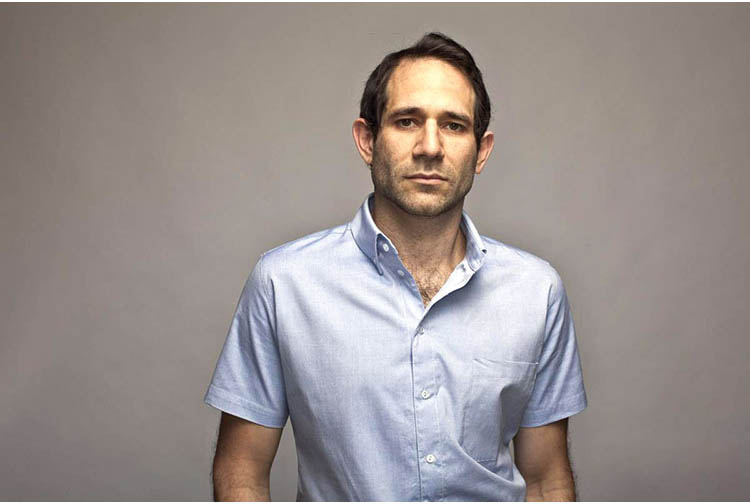June 21, 2017
American Apparel: End of An Original
The inside story of how American Apparel’s iconically risqué retail brand collapsed & the new plan to resurrect the brand's wholesale business.
American Apparel’s former employees and founder Dov Charney offer a no-punches-pulled retrospective on the twilight of the iconic retailer that won worldwide attention with pioneering styles, Made-in-the-USA production, and risqué marketing.
 t’s late morning on a sunny Los Angeles weekday and this towering downtown apparel factory is teeming with life. Fabric cutters are slicing sheets of material. Workers in turned-back Dodgers caps are hustling, packing boxes with trendy hoodies. And on a sprawling open floor, legions of sewers are plying their trade, their machines drumming stitches into place like a team of manic percussionists, creating T-shirts for everyone from urban hipsters to union teamsters.
t’s late morning on a sunny Los Angeles weekday and this towering downtown apparel factory is teeming with life. Fabric cutters are slicing sheets of material. Workers in turned-back Dodgers caps are hustling, packing boxes with trendy hoodies. And on a sprawling open floor, legions of sewers are plying their trade, their machines drumming stitches into place like a team of manic percussionists, creating T-shirts for everyone from urban hipsters to union teamsters.
>>Don't miss: What's next for American Apparel
A gritty, hard-won vitality permeates the space. The energy is palpable in the hum of machines and the dexterity of fast-working hands. It’s a force felt, too, in the snippets of talk among workers, who add first languages from around the globe to the rhythmic pulse of manufacturing. In their labor, their teamwork that spans a spectrum of cultural backgrounds, in the sheer manufacturing force they help propel, there radiates an essence that’s profoundly American. Indeed, it’s no accident that the company is named American Apparel.
But this morning, typical of many at the factory, is in the past. It occurred in 2012. After a reported $86 million loss in 2010, things were seemingly on the up. The vertically integrated manufacturer of fashion basics had just reported strong quarterly net sales. Certainly some company leaders were buoyant, believing that greater revenue gains and sustained success were ahead.
They were wrong.
Nearly five years after that bustling morning, in January of 2017, American Apparel ended up on the auction block following multiple bankruptcies, the ousting of controversial founder Dov Charney, alleged dubious maneuverings from lenders, and the installation of a new executive team that was unable to save the company.
In February, Montreal-based apparel maker Gildan (asi/56842) completed the purchase of American Apparel’s intellectual property rights, some wholesale merchandise and some equipment, but not its production facilities or retail stores. While not Gildan’s fault, the deal sealed the fate of the remaining Los Angeles factory workers – and many others employed by the company. Unemployment had been looming; now it came.
Today, American Apparel’s factory has fallen silent. The sun still wins its struggle with the industrial windows, pushing SoCal rays across the floor, but there are no American Apparel workers there to appreciate the light. Only memories hold sway.
The Debt Millstone
The big question: How did it come to this for American Apparel?
To be clear, the brand itself is still alive, planning big things and available to promotional products distributors through Gildan. Going forward, Gildan says it’s enthusiastic about building upon some of the best aspects of American Apparel’s legacy, including innovative styles and hip appeal. Gildan believes that, with some work, the American Apparel name can recapture its once widespread appeal. “We’re excited about taking this brand and making it a leader again,” says Garry Bell, Gildan’s VP of corporate marketing and communications.
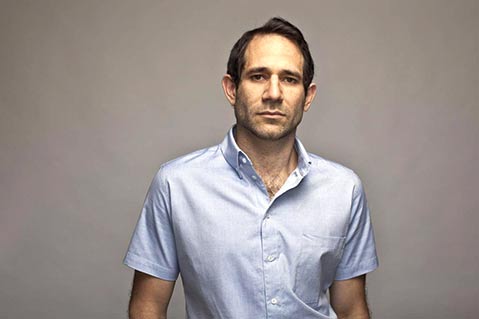

But while the American Apparel brand lives, the business that was a global-retailing, vertically integrated apparel manufacturer – an organization that had called itself a one-company industrial revolution – is dead. How did that happen to a business that pioneered fashion basics, that had a worldwide retail presence, that led the way in USA-made apparel production, that won praise for the above-average wages it provided, that cultivated a world-famous hip image through risqué marketing, and that ranked among Counselor’s Top 40 largest suppliers in the North American promo products industry year after year?
For answers, Counselor talked to Charney, distributors, analysts and former American Apparel employees who were there for the company’s meteoric rise and bruising tumble back down the mountain. The picture that emerges is a Jackson Pollock – a complex swirl of different factors that contributed to the ultimate demise. Still, a number of key elements – all intertwined – appear to rise from the whirling muddle. They include overzealous retail expansion, lack of effective brand and product evolution, changing marketplace trends, operational and organizational shortcomings, crushing debt, potentially the alleged bad-faith actions of lenders, and a founder whose salacious controversies came to overshadow the brand, triggering backlash.
“For a while, everything about the American Apparel story was appealing. It was an attractive and universally appealing brand name,” says Mark A. Cohen, director of retail studies at Columbia University’s Graduate School of Business. “But the fundamentals of the business were unsustainable, and the notoriety of the founder became more than the business could bear. The thing became a train wreck.”
Both analysts and certain former employees, though not Charney, say American Apparel’s problems began back when the company was seemingly moving from strength to strength, growing rapidly and a darling must-have label for millennials.
To capitalize on the energy around the brand, American Apparel rapidly expanded its retail presence. The first stores launched in 2003. Over the next several years, American Apparel exploded into a chain with 140 locations in 11 countries. Fast-forward to 2009, and there were more than 280 stores in operation. Charney had even proclaimed that the expansion was the “fastest retail roll-out in American history.”
Too fast, says one former leadership level employee who asked to remain anonymous. “If you look at the early days of the retail period…would any business class you’d take in college advocate opening that many stores around the world so quickly?” says the employee we’re calling Darren. “Stores were going up left and right. The rents were high. We weren’t going into cheap places. We had about 15 stores in Manhattan alone at one point. You couldn’t get off a subway without seeing an American Apparel, went the joke. With all this, there became a huge nut you had to crack every month. The financial need was just enormous.”
Certain analysts agree with Darren’s assessment. While the retail store blitz was fundamental to turning American Apparel into a global brand, it eventually became a millstone saddling the company with an ever-increasing debt, they say. The rapid expansion, the positioning of stores in rent-expensive spots, putting too many similarly-merchandised stores close together in a city – all that made it challenging to generate the necessary sales levels. The challenge was exacerbated by agile retailers like H&M, which competed successfully for market share with their fast-fashion business models that offered inexpensive trendy clothes to the same youthful demographic American Apparel courted. “With all this competition you had to deal with, the productivity of those (American Apparel) stores dropped,” Peter Lynch, a partner at A&G Realty Partners, told The Los Angeles Times earlier this year.
And when productivity dropped, debt increased – and increased. The higher cost of U.S. manufacturing compounded the debt travails, in the view of Cohen and other analysts. “The real story of what happened with American Apparel is that Dov ran up millions of dollars in debt,” says another former top-level employee who spoke on condition of anonymity. We’re calling him Dave. “That was very hard to get out from under.”
Charney has dismissed claims that retail stores were underperforming or burdening the business, saying most were profitable prior to his 2014 removal. The U.S manufacturing model was viable and strong, too, he says. Nonetheless, the company started taking on debt in 2009, he has maintained, to address a productivity decline and the need for hiring and training new skilled workers following an immigration investigation that resulted in American Apparel having to release more than 1,500 employees.
There was no doubt that American Apparel was dealing with debt. And getting that debt monkey off the company’s back was a trick that couldn’t quite be conjured, says Darren. “We did hope things would break and that we would start to pay down the debt, but there was a lot,” he says. “Dov put every penny he had into this thing. It was his heart and soul. He could always find a way to come up with more cash. But he went to the well too many times – agreed to things where he lost power. It became very difficult for him.” Adds Dave: “It was painful to see from the inside. You could feel that the ship was sinking.”
Photo Gallery
Mismanagement & Branding Backlash
Still, the storm of debt wasn’t the only impediment that kept American Apparel from reaching safe harbor. Dave and Darren concur that the company’s organizational structure didn’t help maximize what it could achieve. “It was run like a shoot-from-the-hip start up,” says Dave. “Instead of a pyramid-like traditional structure, Dov built this completely horizontal edifice with like 200 direct reports. It was run insanely.” While not as critical as Dave, Darren says that a clearer, more orderly structure could have been beneficial.
Paula Rosenblum, a managing partner at Retail Systems Research, believes other missteps by management hurt the company too, both before and after Charney’s time. “This was a business that begged for endless aisle retailing,” says Rosenblum. “They probably should have done something different distribution-wise as well.”
Ironically, American Apparel’s downfall as a company could also have been hastened by what for a long time was a significant strength: the raw, unvarnished, sexually-charged aesthetic of its marketing – an aesthetic, says Dave, that became increasingly repellant when associated in the popular consciousness with accusations that Charney engaged in sexual harassment and other alleged sordid behavior.
Dave says American Apparel’s marketing should be credited for spearheading “an alternative idea of beauty” in the fashion world – one where real people from the brand’s target demographic were presented in unapologetically natural looks. “We were doing Instagram 10 years before there was Instagram,” says Dave. “It had a huge part in growing the brand.”
And sure, the live current of overt sexuality coursing through the imagery, sometimes criticized as pornography, helped electrify the appeal – at least initially. “When American Apparel came out, there was a hunger for unpolitically correct, racy stuff,” says Dave. “The sexual element hit a nice note. But it was also a deal with the devil. It got us attention, but at the same time, it was a one-liner that would eventually get tired. And it did.”
Tastes started to change, and American Apparel failed to evolve its aesthetic to continue captivating core audiences, says Dave. Combine that with the fact that the company founder was the subject of legal actions related to alleged sexual harassment and other accusations of skeevy behavior, and the sexuality of the marketing content spurred a backlash, Dave maintains. “The brand had finite appeal and was over,” he says. Rosenblum agrees: “The sexy vibe – that was just done. That was gone. That was not fun anymore. Couple that with some of the things Charney was supposedly doing and you get a real creepy factor.”
It would seem the allegations of sexual misconduct that Charney faced – dating back until at least 2005 – didn’t help matters for American Apparel in the court of public opinion. Perhaps the most notorious was the case of Irene Morales, who sought $260 million and alleged that Charney locked her in his apartment as a “sex slave.” The suit was settled for $1.56 million based on a finding that Charney supported the setting up of a blog that impersonated Morales.
In a 2015 filing, American Apparel said two other sexual harassment claims by ex-employees were settled for confidential amounts. Another female employee received $1.82 million based on Charney’s alleged failure to intervene in the establishment of a blog that impersonated her. Through September 2014, lawsuits against Charney totaled $8.2 million in insured litigation costs and $1.2 million in uninsured litigation costs, according to the American Apparel filing.
Other allegations against Charney include that he physically and verbally abused workers, sent sexually explicit texts and emails to staffers, and that he used an American Apparel computer and network server to save images and videos of himself engaged in sexual activity with employees and models.
For his part, Charney has long-asserted that any sexual activity that he did engage in was consensual. He has characterized himself as a target of extortion attempts by people intent on exploiting his “transparent persona,” and as a victim of a smear campaign aimed at discrediting him. “There has been a lot of spin,” he told Counselor. “I deny all allegations.”
At the time of American Apparel’s filing in 2015, Charney’s lawyer Keith Fink said in an email to BuzzFeed that allegations against his client were “completely false.” American Apparel’s management was “desperately trying to distort public attention to the fact that Mr. Charney’s firing was illegal. They went through years and years of private text messages from his personal telephone between himself and his friends, some of which involved amorous conversations that were consensual and welcome in nature.”
Regardless, with all the smoke around Charney’s image and alleged actions, consumers saw fire and became increasingly turned off to American Apparel and its sexualized marketing, according to Dave. That hurt sales. “The stuff made us repugnant,” he says.
Beyond failing to progress past what may have been an increasingly problematic image, inadequate evolution could have hurt American Apparel on the product side too, former employees and analysts say. Styles went stale and weren’t reinvigorated. Over time, Dave says the company strayed too far from creating new innovations in fashion basics – the lifeblood of what had made American Apparel great. “Resources were put into making fast-fashion stuff that was not in line with the core of the company,” he says. “They started making slutty stripper wear, preppy clothes, sweatpants. It just got more bizarre.”
Sahir Anand sees merit in the argument that American Apparel got stuck and lost its way. “You need to keep reinventing your story, constantly evolving your brand,” says Anand, a vice president at EKN Research, an advisory firm that focuses on consumer industries, including retail. “You have to track your evolution and keep redefining how you enter the market space. They don’t appear to have done that effectively.”
American Apparel might also have been wounded by neglecting to adapt quickly enough to web-based buying trends. According to a court filing, the company was consistently earning about 11% of its revenue through online sales. That reportedly compared to 20% for competitors. Rosenblum doesn’t buy those numbers, but does maintain that American Apparel should have grown to be omnichannel, providing a seamless experience for consumers across digital platforms and physical stores. “Mistakes were made,” says Darren.
Distributors’ Take
From a promo distributor perspective, Mark Ziskind taps into a theme related to inadequate progression to partially explain American Apparel’s decline, saying that the company didn’t advance its styles or service in a way that allowed it to solidify the leadership position it once held.
“No doubt they were pioneers with fashion tees and the like, but they didn’t own it – didn’t maintain their dominant position and completely control the market,” says Ziskind, COO at Top 40 distributor Caliendo Savio Enterprises (CSE, asi/155807). “You had viable alternatives in the same categories come into play, and those alternatives were backed by distribution models that were friendlier to our industry. They lost their point of differentiation, the value-added services were not there, and they became obsolete.”
Meanwhile, distributors like Howard Potter say inadequate clothing quality and sizing options, along with shoddy service, led him to stop doing business with American Apparel several years ago. “The stock was always off, their stuff always shrank during the screen printing process, the sizing was really narrow, and they didn’t understand their own product,” says Potter, CEO of A&P Master Images (asi/102019). “I don’t think I was the only one dealing with those issues.”
Still, other distributors sing an entirely different tune. While admitting fit could sometimes be inconsistent, Harry Ein says that American Apparel was a boon to his business. The owner of Perfection Promo, an affiliate of Top 40 distributor iPROMOTEu (asi/232119), says the brand offered a cutting-edge image, robust urban retail presence, and fair wholesale pricing that helped him earn scores of sales. He had particular success with clients targeting fashion-forward end-users – clients like technology companies in the San Francisco area where he resides. “When I could offer them an American Apparel shirt with their logo on it for less than what they were accustomed to seeing it for at the store, that became a very easy sale,” says Ein, noting he did $90,000 worth of business (net sales directly to American Apparel) with the supplier in just a few years’ time.
Josh Ebrahemi tells a similar story. Praising American Apparel styles, cuts, quality and appeal to a range of clients, the partner at Top 40 distributor Jack Nadel International (asi/279600) says he would use American Apparel as a kind of barometer to gauge a buyer’s taste and budget. “I would literally say to clients something like, ‘Are you looking more for a typical promo shirt or something of American Apparel quality?’” Ebrahemi says.
Until American Apparel’s final days as a vertically integrated manufacturing company, Ein and Ebrahemi say the supplier’s distribution model and service met their needs. “I have nothing but good things to say about working with American Apparel,” says Ein. “They were a partner. They were based in the U.S. and I believed in that mission of domestic production. I thought they had a good brand, a good product. I’m sorry for the troubles that they ran into.”
The Final Descent
Despite those troubles, some longtime employees believe that American Apparel could have overcome the obstacles and would still be in business today as a retailer/manufacturer had it not been for lenders who didn’t have the business’ best interests at heart and the imposition of new executives that, they allege, were ill-suited to direct the company. “I think if Dov had continued on, the company would not be in the position it’s in today,” says Pat Honda, who worked in American Apparel’s wholesale division from 2001 to 2015, serving as director and later president.
In June of 2014, the company’s board of directors ousted Charney from his CEO position for alleged misconduct and purported violations of company policy. In December of the same year, after an investigation Charney says was a sham, the board fired the founder from his role as a consultant (Charney vigorously asserts that sexual harassment was not one of the reasons for his firing).
Following Charney’s final removal, the board hired veteran fashion executive Paula Schneider as CEO. To lead the hoped-for turnaround, Schneider brought in other new executives – a team under which the culture at American Apparel shifted 180 degrees. “They sucked the life out of the place,” says Honda. “It was a fun, young, creative culture where you knew people would inspire you. But then they came in and built themselves these beautiful offices and locked themselves in behind security doors. The open-door policy was gone. They created a corporate environment. It didn’t work for our business.”
Perhaps even more fundamentally, says Darren, at least some executives failed to adequately comprehend American Apparel, from its operations and facilities to its audience, markets and the apparel itself. “They had degrees and experience, but they didn’t understand the business,” Darren says.
While Cohen and Rosenblum criticized Charney’s work as an executive, both lauded him as being an ingenious merchant – something Rosenblum says Schneider was not. “She was an operator, not a merchant,” Rosenblum says. “She was there to tidy up the financials. I felt they needed another merchant to capitalize on the opportunities that were out there.”
While Schneider did not respond to an interview request from Counselor, she spoke at Fortune’s Most Powerful Women Summit 2016 about her time at American Apparel. She maintained that she had “every intention of succeeding” and that with enough time and money “we would have succeeded.” Saying she had a strong, highly capable team in place, she professed that her intention was to keep American Apparel’s manufacturing in the U.S. while turning the brand into a powerhouse again.
Additionally, Schneider said that the obstacles she inherited on her first day were monumental, from slow-moving inventory to the legacy of hundreds of millions in losses over the previous five years to having not turned a profit since 2009. “It looked as though we were going to hit the rocks by April,” says Schneider, who officially began as CEO in January of 2015. “I pulled every single lever I could to save money.”
One of those levers included “furloughs.” The layoffs hit the American Apparel workforce hard. “Morale was low,” says Honda, who was dismissed, she claims, on the heels of engineering an approximately $17 million month in wholesale sales – a firing she alleges was part of a concerted effort by management to rid the company of people who had been close to Charney. “On Thursdays and Fridays, they would let teams go. It made for agonizing anxiety at the end of each week.”
That anxiety translated into worker anger and demonstrations, with some professing loyalty to Charney, believing he would not have allowed layoffs to occur. Outside company headquarters, workers even bashed a piñata with the likeness of Schneider, who said she also received a death threat in the form of a picture of a corpse that looked like her. Darren says security guards with dogs were brought in – a move that only served to escalate animosities in his view. “I was literally trying to save 9,000 jobs and save a company that had been troubled for years,” says Schneider.
Nonetheless, American Apparel filed for bankruptcy in 2015. Some, like Darren, believe that the emergence from bankruptcy was mishandled, accelerating the company’s tailspin toward nonexistence. He feels many more retail stores should have been closed than actually were, among other decisions that left him scratching his head. “I actually thought, ‘Are they trying to bankrupt the company for good?’” says Darren.
About a year after American Apparel filed for bankruptcy, Schneider resigned as CEO effective October 3, 2016. The resignation came about a month after American Apparel had hired a global investment bank to explore a sale of the company. In her resignation letter, Schneider wrote that “the sale process currently underway for all or part of the company may not enable us to pursue the course of action necessary for the (turnaround) plan to succeed nor allow the brand to stay true to its ideals. Therefore, after much deliberation, and with a heavy heart, I’ve come to the conclusion it is time for me to resign as CEO.”
In November of 2016, American Apparel again filed for Chapter 11 bankruptcy and entered into a proposed agreement to be acquired by Gildan.
“The Venture Capitalists Smelled Blood”
While Gildan closed the deal in early 2017, that didn’t end the saga surrounding American Apparel’s demise as a manufacturing/retail company. In January, a lawsuit filed by hedge-fund investor Standard General shed possible additional light on what Charney and others assert was a primary cause of the shuttering: alleged perfidious dealings by lenders.
A former American Apparel shareholder and member of the lender committee that held more than 90% equity in the company, Standard General sued other lending committee members that bailed American Apparel out of its first bankruptcy in 2015. Standard General claimed the other lenders saddled the company with $82 million in additional debt between April and October of 2016 while seeking a buyer for the business. Imposed without informing Standard General, the terms of the loans empowered the lenders to overtake Standard General in American Apparel’s capital hierarchy, according to the suit.
What’s more, Standard General claimed that, rather than trying to reinvigorate American Apparel after the October 2015 bankruptcy as was promised, the lenders really intended to swiftly sell the company to make a “quick profit at a premium price.” When that didn’t happen, the lenders looked for another buyer and allegedly loaded up the debt as American Apparel lost money. “The lender committee did not pursue any operational or transactional solution to the company’s financial woes other than to attempt to find a new purchaser for the company,” Standard General claimed. Says Darren: “The venture capitalists smelled blood.”
Interestingly, the suit also revealed that the turnaround plan for American Apparel was to include exiting the dyeing and knitting operations in California and moving production from Los Angeles to the southeastern U.S.
Standard General filed the suit in U.S. Bankruptcy Court in Delaware, naming lenders that include Monarch Master Funding Ltd., Coliseum Capital Partners L.P., Blackwell Partners LLC, Goldman Sachs, and Pentwater. The named parties deny any wrongdoing and filed motions to dismiss the case. At press time, hearings were ongoing and no rulings were issued.
Considering the lawsuit from an independent perspective, Cohen says it’s difficult to say if the allegations against the lending committee will hold water. Do financial players sometimes prefer failure or a quick sale to a company’s reemergence so they can realize a profitable gain? Of course, he says. Is that what happened with American Apparel? “I don’t know if anyone other than the lenders knows what their intentions were,” he says. “I think you have to presume they wanted the company to be successful again. At the end of the day, we don’t know what went on. Ultimately, the company couldn’t refinance its future, and it collapsed.”
Defiant But Forward-Looking
It’s another sunny weekday morning in LA, but Charney’s mood doesn’t match the weather. He seethes as he talks about the fate of American Apparel from the LA headquarters of his new clothing company, Los Angeles Apparel. For him, it’s unequivocal what brought down the company he founded: backstabbing by lenders and the company board. “American Apparel failed for one reason: corruption,” he says. “Forces on Wall Street illegally hijacked a company to enrich themselves – and then they crashed it.”
Defiant and passionate, Charney disputes what he says are inaccurate media narratives about the company’s downfall, calling them “fake news.” While public documents show that American Apparel experienced losses and sales declines, Charney maintains that American Apparel produced EBITDA profitability under his leadership. “That’s the way to value a business,” he says. “We were meeting target profitability goals on an EBITDA basis.”
Proclaiming that the American Apparel brand remained powerful, Charney says that he was “double-crossed” by the board and lenders intent on getting him out of the way. Legal battles related to the tangle of allegations remained as of press time. “They not only betrayed the shareholders and the founder, they betrayed the community, the Made-in-the-United-States movement, and they betrayed 5,000 workers in Los Angeles and 10,000 worldwide. This was a largescale transfer of wealth from Main Street to Wall Street,” says Charney. Further, he added, the investigation that led to misconduct charges and his firing was a bogus kangaroo court. “My opponents spent millions in trying to distort the truth,” Charney says.
While still incensed about American Apparel, Charney is also excited about the future of Los Angeles Apparel – a company he founded last year. Honda, who is helping spearhead the fresh venture, says the business employs 300 former American Apparel production workers. Made-in-the-USA, the line will feature classic basic styles that helped make American Apparel a household name, as well as new innovative cuts, styles and colors, Charney says.
Top 40 supplier TSC Apparel (asi/90518) has entered into a partnership with Los Angeles Apparel to carry the line in the promotional products industry. Los Angeles Apparel operates in the wholesale market, but could eventually expand to retail. “I think we’re going to inspire the next 10 years of T-shirt making,” says Charney.
Darren is not part of Los Angeles Apparel. He has moved on to another job. It’s a good gig, but it’s not American Apparel. Nothing could ever really compare to the energy, vibrancy and creativity of American Apparel at its height, says Darren, his voice inflected with a trace of nostalgia. “It was an incredible experience,” he says. “It was amazing to be part of something that for a while had such a great growing story. It was a story the world was seeing and hearing. I’ll probably never have that type of experience again.”
Marketing Genius or Simply Sleaze?
American Apparel’s suggestive ads were both a blessing and a curse for the brand.
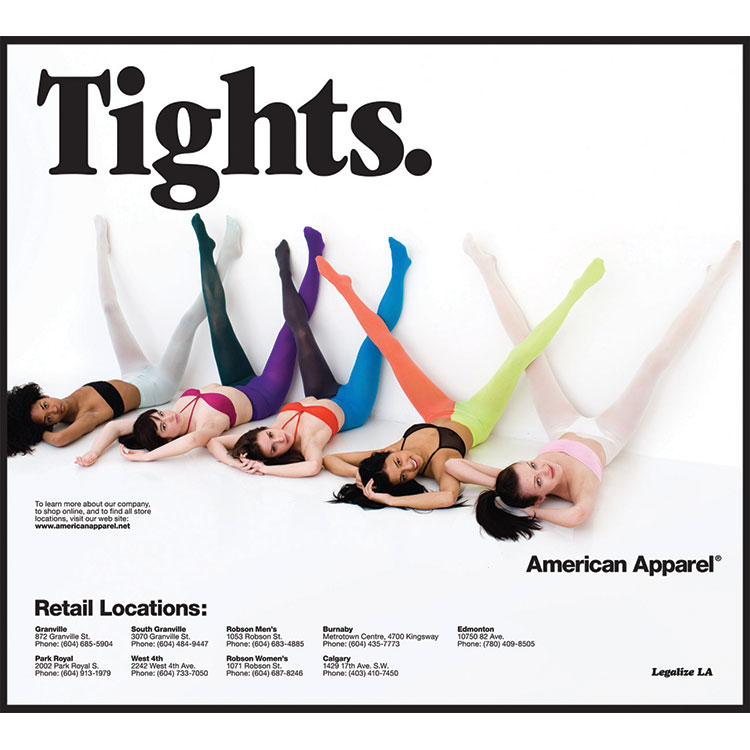
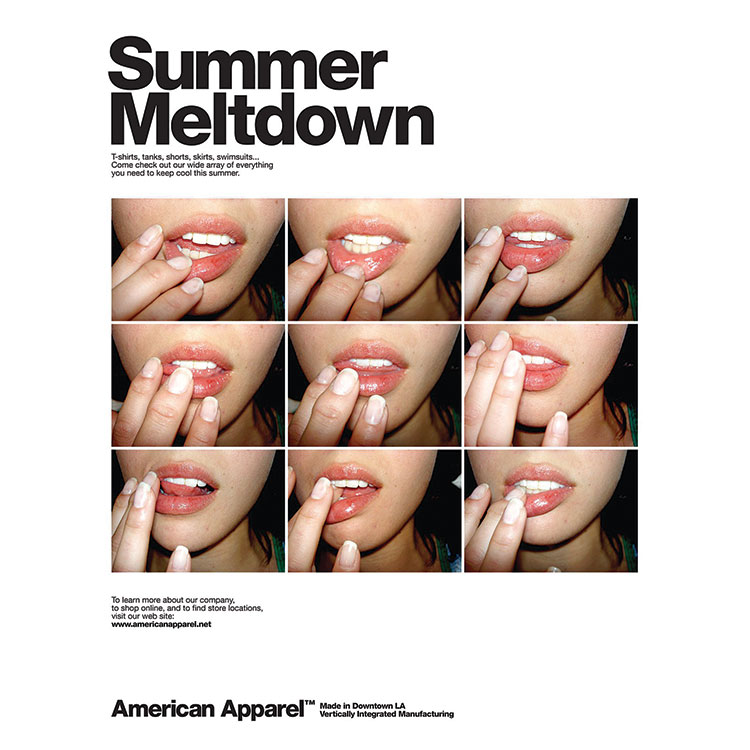

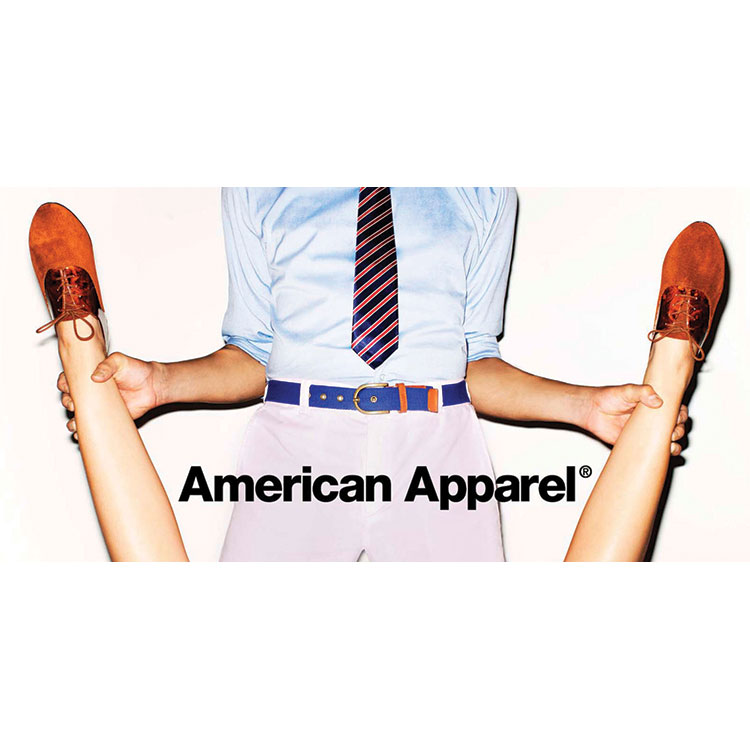

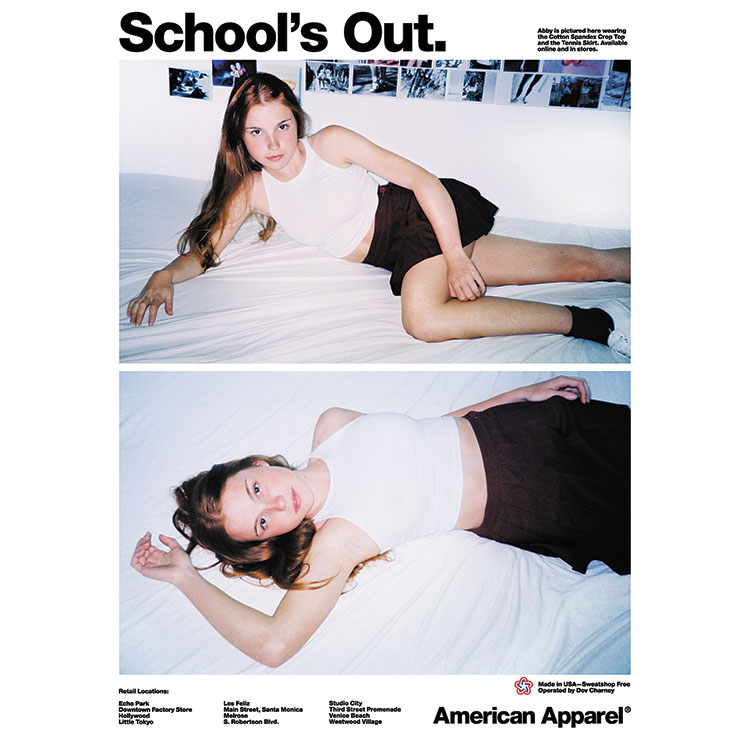

– Email: cruvo@asicentral.com; Twitter: @ChrisR_ASI

